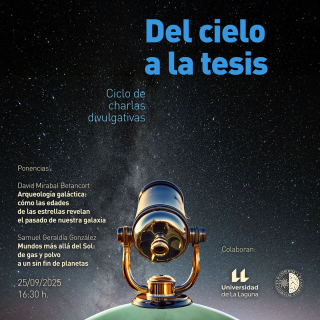It may interest you
-
 The European Solar Telescope (EST) project has taken a decisive step towards construction with the establishment of the Board of Governmental Representatives (BGR), marking the first formal commitment at the governmental level to this European flagship in solar research. Until now, EST has been driven by a scientific consortium of universities and research institutions across Europe. The creation of the BGR transforms EST into a collaboration among European nations, whose national governments lend political support to the project and to the creation of a future European Solar TelescopeAdvertised on
The European Solar Telescope (EST) project has taken a decisive step towards construction with the establishment of the Board of Governmental Representatives (BGR), marking the first formal commitment at the governmental level to this European flagship in solar research. Until now, EST has been driven by a scientific consortium of universities and research institutions across Europe. The creation of the BGR transforms EST into a collaboration among European nations, whose national governments lend political support to the project and to the creation of a future European Solar TelescopeAdvertised on -
 The Museum of Science and the Cosmos (MCC), part of the Autonomous Organization of Museums and Centers of the Cabildo of Tenerife, will host the second session of the scientific outreach series “From the Sky to the Thesis” on Thursday, September 25, at 4:30 p.m. The series is organized in collaboration with the University of La Laguna (ULL) and the Institute of Astrophysics of the Canary Islands (IAC). The initiative, promoted by doctoral students from the IAC, seeks to bring the main topics of research in astrophysics closer to the public, told in the first person by those who develop themAdvertised on
The Museum of Science and the Cosmos (MCC), part of the Autonomous Organization of Museums and Centers of the Cabildo of Tenerife, will host the second session of the scientific outreach series “From the Sky to the Thesis” on Thursday, September 25, at 4:30 p.m. The series is organized in collaboration with the University of La Laguna (ULL) and the Institute of Astrophysics of the Canary Islands (IAC). The initiative, promoted by doctoral students from the IAC, seeks to bring the main topics of research in astrophysics closer to the public, told in the first person by those who develop themAdvertised on -
 The Instituto de Astrofísica de Canarias (IAC) has opened the application period for the XXXVI Canary Islands Winter School of Astrophysics , which will be held from 17 to 22 November 2025. This edition is carried out in the framework of the CELESTE (Centre for Optical and Space Technologies of the IAC) programme funded by the European Union and will focus on key optical technologies for astronomy, a field that is driving 21st century discoveries about the universe. Applications will be accepted until Friday, 13 June. The IAC’s Winter School is renowned for its educational approach andAdvertised on
The Instituto de Astrofísica de Canarias (IAC) has opened the application period for the XXXVI Canary Islands Winter School of Astrophysics , which will be held from 17 to 22 November 2025. This edition is carried out in the framework of the CELESTE (Centre for Optical and Space Technologies of the IAC) programme funded by the European Union and will focus on key optical technologies for astronomy, a field that is driving 21st century discoveries about the universe. Applications will be accepted until Friday, 13 June. The IAC’s Winter School is renowned for its educational approach andAdvertised on
